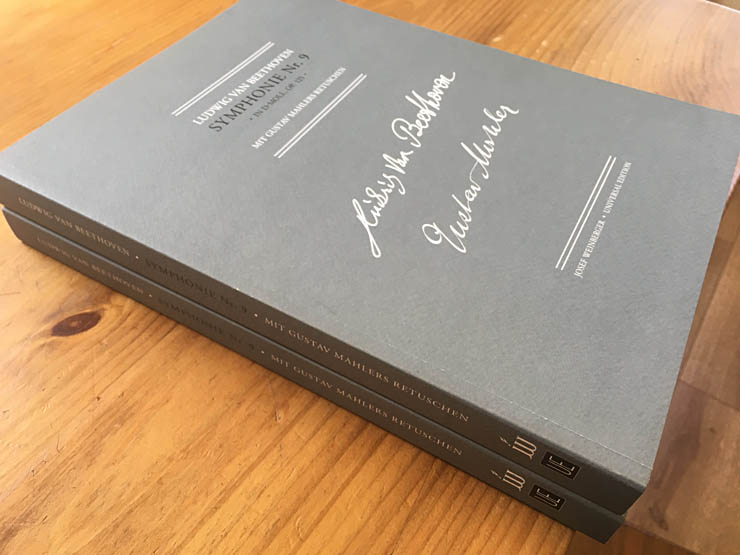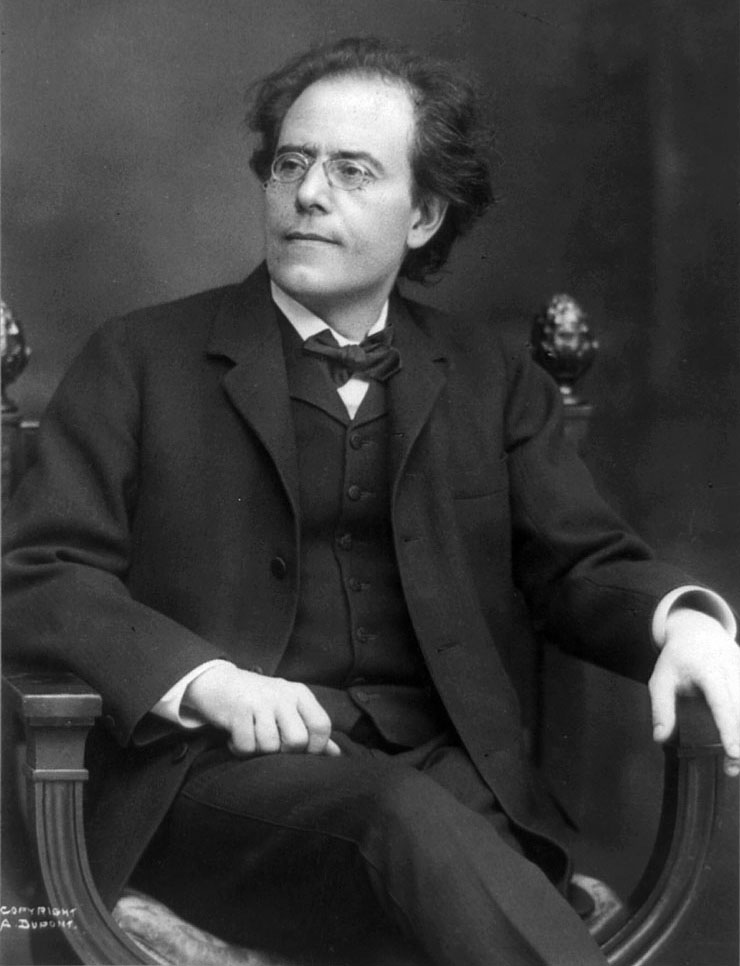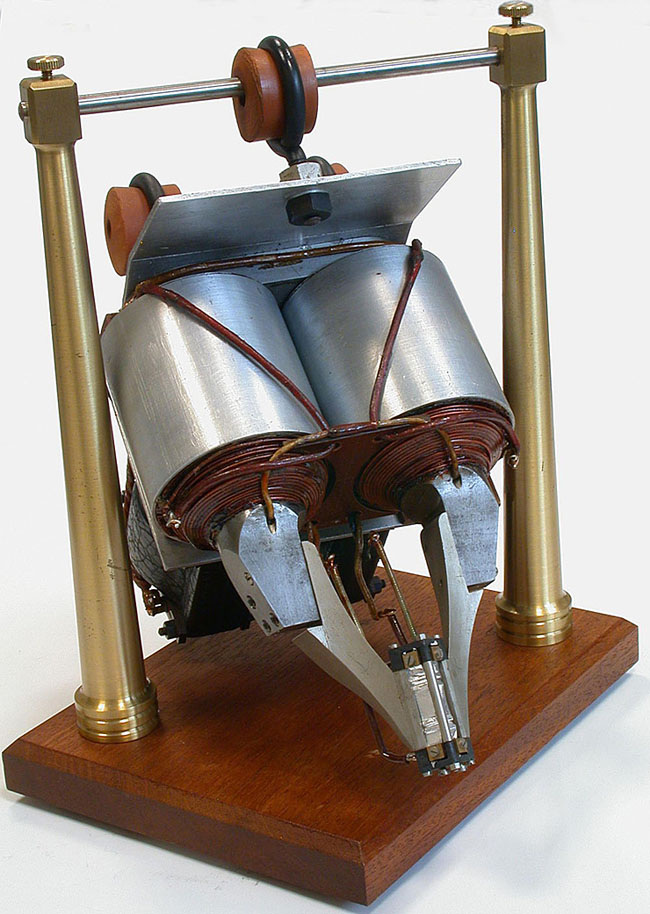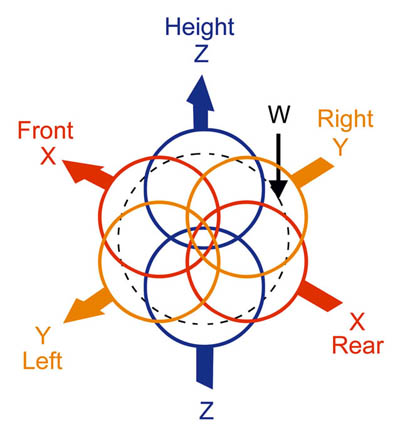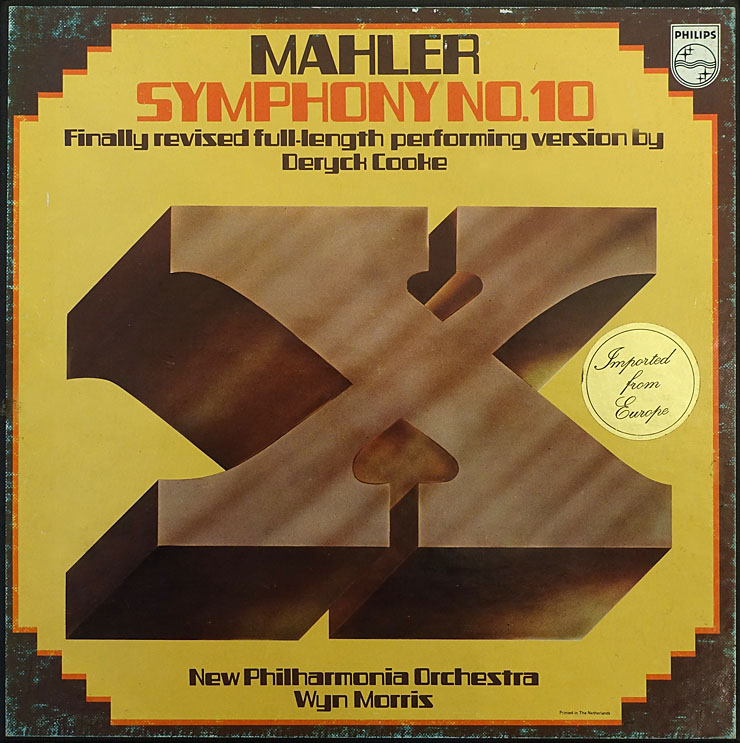Gustav Mahler conducted Beethoven’s Ninth Symphony on ten occasions: in Prague, Hamburg, Vienna, Strassburg and New York. For the last seven of these performances he prepared and used his own score and orchestral parts. I have transcribed and edited these materials...
| DAVID PICKETT musician |

|
Gustav Mahler as an Interpreter
– a study of his textural alterations and performance practice in the symphonic repertoire
“David Pickett ... the foremost worldwide authority on the extensive material concerning Mahler’s retouchings of the works of other composers.” — Dr. Reinhold Kubik, Vice-President of the International Gustav Mahler Society, Vienna, and chief editor of the Critical Complete Edition of Mahler’s works, 1992–2013.
“David Pickett ... der weltweit erste Kenner der umfangreichen Materie von Mahlers Retuschen der Werke anderer Komponisten.” — Dr. Reinhold Kubik, Vize-Präsident der Internationalen Gustav Mahler Gesellschaft, Wien, und Editionsleiter der Kritschen Gesamtausgabe der Werke Mahlers, 1992–2013.
What are Mahler’s “Retuschen”?
A performance conducted by Gustav Mahler of the music of other composers often incorporated his textural revisions, including changes to the instrumentation. Mahler called these revisions Retuschen, and this German word has been retained here because of the lack of an equally elegant equivalent in English. It is a word adapted from the French retouche and is roughly translatable as “retouchings”.
I can hardly recall a time when I was not actively engaged in studying the life and works of the composer and conductor Gustav Mahler (1860-1911). As a teenager, in adition to searching out the few recordings of his symphonies and listening to almost as rare broadcasts of them on the BBC, I studied and copied out the manuscript of Mahler’s Tenth Symphony and as a university professor I have lectured and written frequently on Mahler and his works. While still at school I scoured London’s public libraries for scores and books on Mahler, many of these written before the Second World War, and mostly in German. In them I found hints that Mahler had rescored Schumann’s symphonies, but they gave very little information about what he actually did. When I did discover articles on these rescorings, they conflicted in detail with the rental copies that I was allowed to see at UE in London.
In 1975, upon first seeing some of Mahler’s personal performance materials of the orchestral music of Beethoven and Schumann, I realised that this was an under-explored though important area of the composer’s life and decided to concentrate my studies on his conducting career and, in particular, to identify authentic sources of his Retuschen. This work was done under the direction of Dr. Hans Heimler, a Viennese-born composer, conductor and musicologist. In the resulting PhD thesis, Gustav Mahler as an Interpreter (University of Surrey 1989), I catalogued and analysed for the first time 60 such sources now in archives and private collections in Europe and the USA. My own experience as a conductor and composer has proved invaluable in understanding Mahler’s intentions and in deciphering the shorthand in his scores.
Summary of the Thesis
My doctoral thesis is a study of Gustav Mahler’s interpretative style as a conductor of the symphonic repertoire and focuses particularly on his Retuschen in the concert repertoire. In it Mahler’s performance practice as a conductor is related to his own concert career, the interpretations of his close predecessors, contemporaries and successors, studies of his concert repertoire, his conducting technique and rehearsal methods.
A catalogue is included of sixty sources from public and private collections in Europe and America comprising scores and orchestral parts of works by Bach, Beethoven, Bruckner, Mozart, Schubert, Schumann, Smetana and Wagner. Description, analysis and comparison of these sources is supplemented by contemporary accounts of Mahler’s conducting. Both primary and secondary sources are employed to establish the relative importance of the scores and orchestral parts and to assign dates when they were used by Mahler.
The individual discussion of the works is accompanied by analyses of Mahler’s treatment of each of the instruments of the orchestra, including the extensively used E-flat clarinet. Mahler’s response to acoustics, his changes of dynamic nuances, tempi, attitude to repeats, and cuts are all considered in detail. His performance practice and instrumental Retuschen in Hamburg, Vienna and New York are also compared.
Copies can be found in these libraries:
University of Surrey Library, Guildford, England
Österreichische Nationalbibliothek, Musiksammlung, Wien
Internationale Gustav Mahler Gesellschaft, Wien
Musiksammlung der Wienbibliothek
Médiathèque Gustav Mahler, Paris
Cook Music Library, Indiana University, Bloomington, Indiana
Music Library, University of North Texas, Denton, Texas
Sources Identified since 1989
Since the presentation of the thesis in 1989 I have located more than 30 additional sources used by Mahler, including scores and parts of works of Mahler’s contemporaries, Pfitzner, Enescu and others. These have increased our knowledge of Mahler’s performance practice as a conductor and made more secure the editing of scores and parts for publication. All the existing scores and orchestral materials of the music of other composers known to have been used by Mahler are described and discussed in the book Gustav Mahler – Interpretationen seiner Werke, ed. Peter Revers and Oliver Korte, Laaber Verlag, 2011.
Mahler’s Copyists
Although the names of some of Mahler’s copyists have been known for a long time, those working for him in Vienna ad not been identified. A breakthrough came in 2004 when, working with Dr. Reinhold Kubik, I discovered a document in the Vienna Court archives that contained the signatures of the copyists working at the Opera in 1899. From these signatures and the copyists distinctive script it proved possible to assign names to several of these men who worked extensively for Mahler. This information is written up in News of Mahler Research / Nachrichten zur Mahlerforschung, No. 54, IGMG, Vienna, Autumn 2006.
Mahler’s Retuschen in Beethoven’s Works
Mahler’s performances of the compositions of Beethoven provide many good examples of his Retuschen. Mahler himself wrote that in revising the instrumentation of Beethoven he was not seeking “to make arbitrary changes to a work of art, but to enhance its performance in a way corresponding as much as possible with the intentions of its creator”. An analogy with the practice of the restoration of paintings is relevant; and as with that process it is possible to go too far, as is claimed by some about the restoration work done on Michelangelo’s Sistine Chapel frescos towards the end of the 20th Century. But Gustav Mahler was no musical hack. As an accomplished composer and conductor he knew intimately the instruments of the orchestra and their capabilities; and, consequently, his attempt to bring clarity into the works of his musical predecessors is of great interest. Mahler wrote:
“...Beethoven’s symphonies present a problem that is simply insoluble for the ordinary conductor... Unquestionably, they need re-interpretation and re-working. The very constitution and size of the orchestra necessitates it: in Beethoven’s time, the whole orchestra was not as large as the string section alone today. If, consequently, the other instruments are not brought into a balanced relationship with the strings, the effect is bound to be wrong...” Recollections of Gustav Mahler by Natalie Bauer-Lechner, ed. Peter Franklin, Faber Music, London, 1980, p.140
An Example from Beethoven’s Overture, Zur Weihe des Hauses, op. 124
Bars 41 to 53 of Beethoven’s overture Zur Weihe des Hauses contains a passage in which it is notoriously difficult to balance the instrumental voices, and of which Mahler’s contemporary, the musician Donald Francis Tovey, wrote:
“...there is no doubt that the overture was calculated for performance with at least double wind... With this trumpet theme, however, the ‘hurrying footsteps’ certainly need four bassoons to make them audible, unless the trumpets and drums are weakened below Beethoven’s manifest intention.” D. F. Tovey: Essays in Musical Analysis, Oxford University Press, London, 1935, vol.2, p.159
Mahler agreed with Tovey in employing double wind for his performances of the overture, using in these bars four bassoons. But this was not enough to make the ‘hurrying footsteps’ audible, so Mahler reinforced the bassoons with the cellos, for the first six bars playing pizzicato, a sound which blends well with the bassoons’ tone, leaving the bassoons prominent. This secures the balance sought by Mahler and Tovey, and (as they not unreasonably believed) also by Beethoven, without changing the timbre materially. The effect can be heard in the recording here by the Warsaw Philharmonic Orchestra, conducted by Peter Tiboris (from TROY089) and seen in the score below (which omits the accompanying string and woodwind chords).
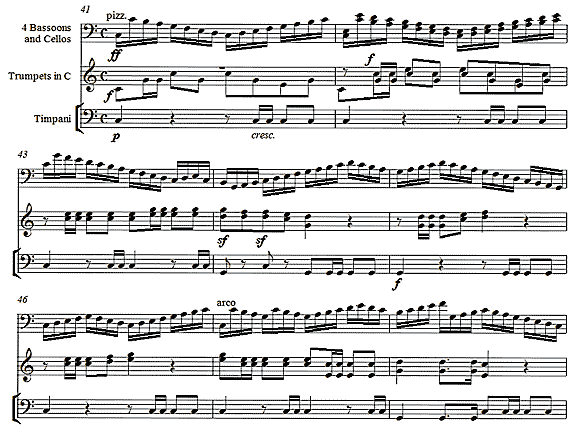
Rev. 3 Dec 2018
